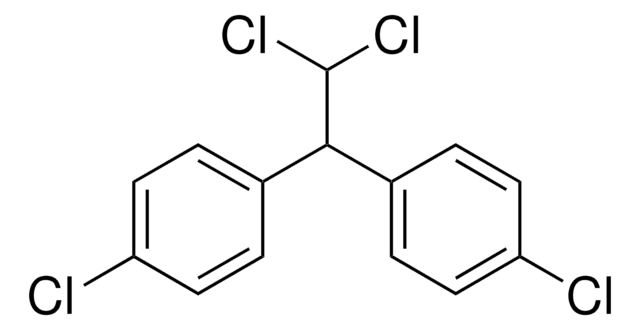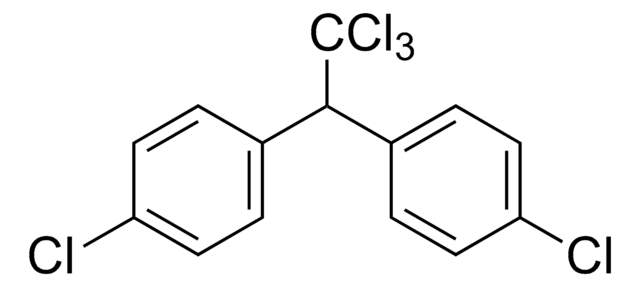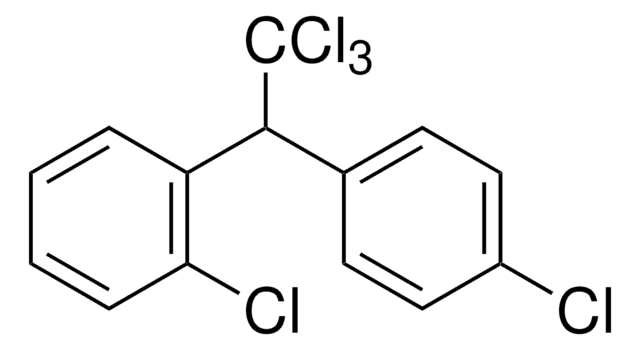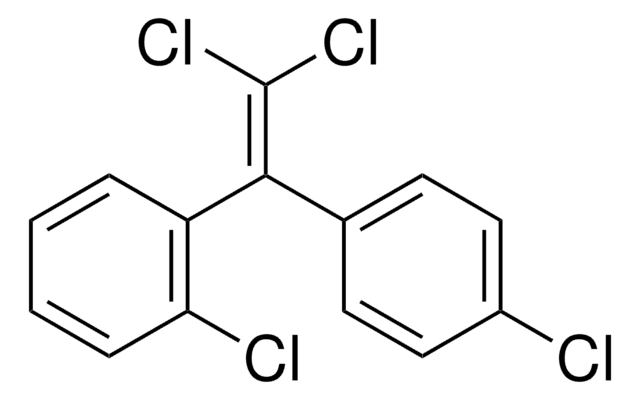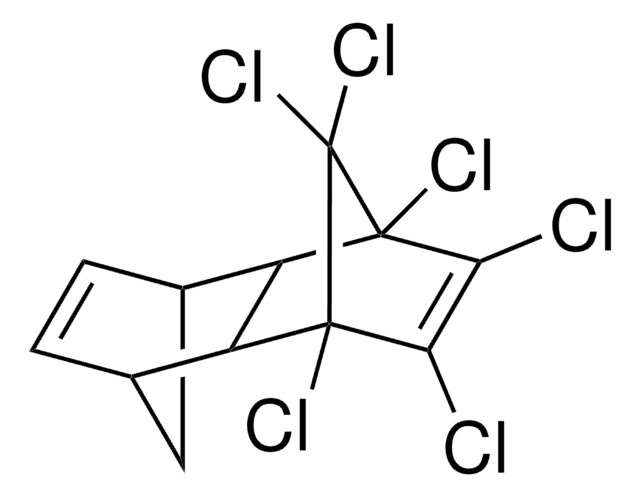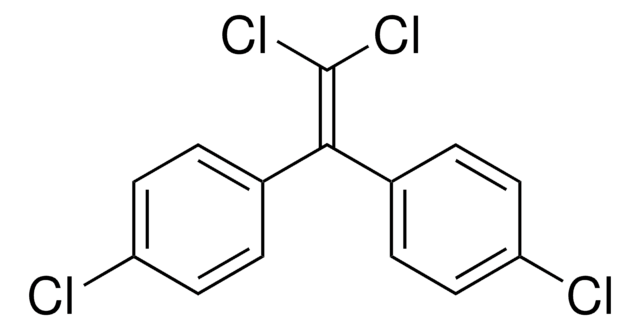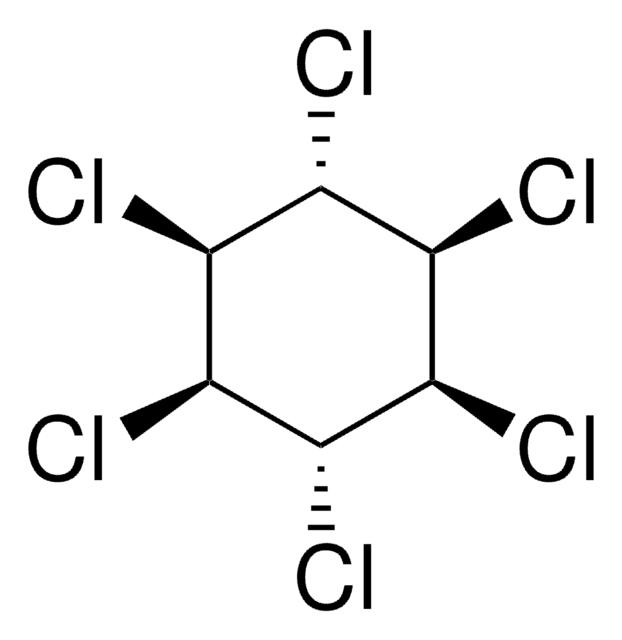35487
4,4′-DDE
PESTANAL®, analytical standard
Sinonimo/i:
1,1-Dichloro-2,2-bis(4-chlorophenyl)ethene, 4,4′-DDE
About This Item
Prodotti consigliati
Grado
analytical standard
Livello qualitativo
Nome Commerciale
PESTANAL®
Durata
limited shelf life, expiry date on the label
tecniche
HPLC: suitable
gas chromatography (GC): suitable
Punto di fusione
88-90 °C (lit.)
applicazioni
agriculture
environmental
Formato
neat
Stringa SMILE
Clc1ccc(cc1)\C(=C(/Cl)Cl)c2ccc(Cl)cc2
InChI
1S/C14H8Cl4/c15-11-5-1-9(2-6-11)13(14(17)18)10-3-7-12(16)8-4-10/h1-8H
UCNVFOCBFJOQAL-UHFFFAOYSA-N
Cerchi prodotti simili? Visita Guida al confronto tra prodotti
Descrizione generale
Applicazioni
Note legali
Avvertenze
Danger
Indicazioni di pericolo
Consigli di prudenza
Classi di pericolo
Acute Tox. 3 Oral - Aquatic Acute 1 - Aquatic Chronic 1 - Carc. 2 - STOT RE 1 Oral
Codice della classe di stoccaggio
6.1C - Combustible acute toxic Cat.3 / toxic compounds or compounds which causing chronic effects
Classe di pericolosità dell'acqua (WGK)
WGK 3
Punto d’infiammabilità (°F)
Not applicable
Punto d’infiammabilità (°C)
Not applicable
Dispositivi di protezione individuale
Eyeshields, Gloves, type P3 (EN 143) respirator cartridges
Scegli una delle versioni più recenti:
Certificati d'analisi (COA)
Non trovi la versione di tuo interesse?
Se hai bisogno di una versione specifica, puoi cercare il certificato tramite il numero di lotto.
Possiedi già questo prodotto?
I documenti relativi ai prodotti acquistati recentemente sono disponibili nell’Archivio dei documenti.
Articoli
GC Analysis of Agricultural Pesticides (Standard) on SLB®-5ms
Protocolli
US EPA Method 8081: GC Analysis of Organochlorine Pesticides on Equity®-5
Il team dei nostri ricercatori vanta grande esperienza in tutte le aree della ricerca quali Life Science, scienza dei materiali, sintesi chimica, cromatografia, discipline analitiche, ecc..
Contatta l'Assistenza Tecnica.